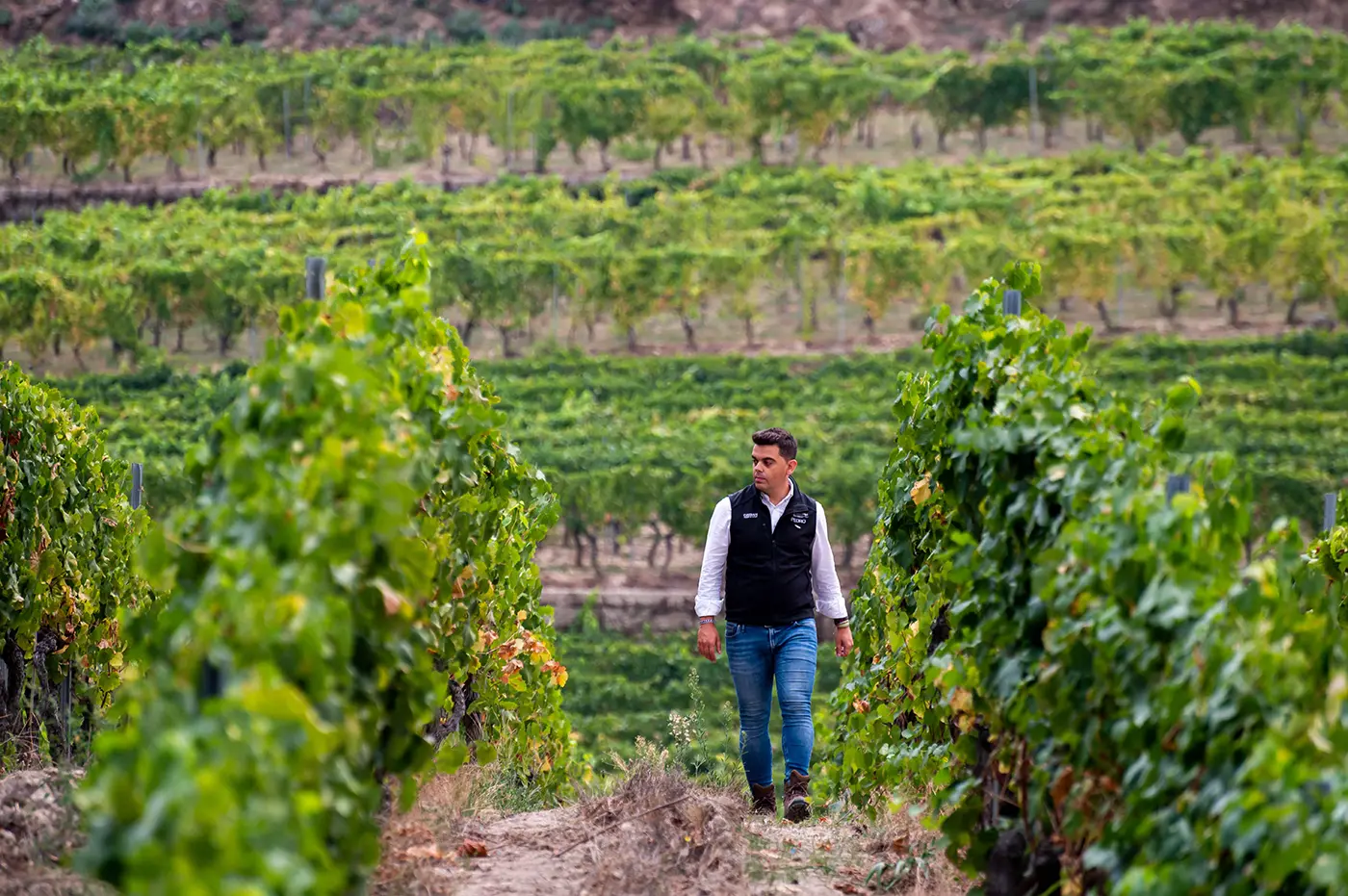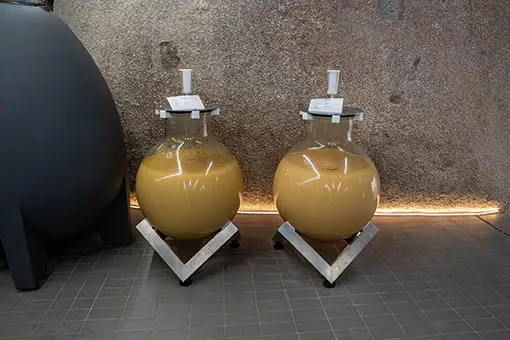VIÑA MEÍN · EMILIO ROJO WINERY
La cuna del Ribeiro
The Meín estate appears in the Galician history books as one of the first settlements, born in the shadow of the Monastery of San Clodio, so closely linked to the origin of viticulture in the Ribeiro region in the XIth and XIIth centuries. In other words, Ribeiro wine was born right there, in Viña Meín and San Clodio.

A living history of viticulture
Viticulture has emanated from the Ribeiro landscape for hundreds of years. Among its steep slopes we find a unique climate and its orography, sculpted by effort, made the terraces the only way to get the necessary land for the cultivation of the vine. The Viña Meín – Emilio Rojo project was born in 2019 as a result of Alma’s commitment to the most historic Ribeiro and its garden of native varieties.
Viña Meín, a historic winery on the left bank of the river, is located on one of the most special plots of land in the area known for its viticulture since the 12th century. Emilio Rojo is a vineyard that has united the colleteiro with his vines for the last 30 years. Emilio’s effort, together with his wife Julia, and the obstinacy to extract the best from his small plot, have turned Emilio Rojo into one of the most iconic white wines in the world.
Minifundismo
The main geological element in Galicia is granite, which is more present here than in any other area of Spain. These soils will mark the character of the wines produced in the area. The vineyards were cultivated on the slopes, which made it necessary to use terraces or terraces. These terraces, as they are known in the area, have gradually taken on their own identity due to the division of the land and zoned the vineyards in a cultural way.
Due to the social and economic characteristics of northern Spain, many plots of land were divided into distinct entities: this division of land has traditionally been known as minifundismo. This division of the land can be used today for the application of precision viticulture: the work is adapted to the realities of each variety and each fraction of the plot.

Winemaking in Viña Meín · Emilio Rojo
The winemaking process at Viña Meín – Emilio Rojo tries to reflect as faithfully as possible the personality of the vineyard and the environment. After the harvest, this identity will remain constant: the white wines are pressed to obtain very low yields on arrival, while the red wines are made only with the grapes that have been crushed.
The materials used are stainless steel, concrete and wood, which is used for both reds and whites. The complexity of the landscape and its authentic personality is achieved with the subsequent batonage work that keeps the wine moving during the ageing process. At the end, it is decided which elaborations are part of Meín and which are part of O Gran Meín, depending on their characteristics. It is then time for blending and bottling, to continue to evolve in the bottle until it is released onto the market.
Los Vinos de Viña Meín · Emilio Rojo
Meín Castes Brancas
Meín 2023 is the representation of the Avia valley, its historical viticultural interpretation, its sábrego soils and a climate that demands meticulous care on the part of the team. The most important grape variety is treixadura, but it has small percentages of godello, albariño, torrontés and loureira.
Meín Tinto
Meín Tinto 2021 is made with caíño longo, garnacha tintorera, brancellao, sousón, ferrón and caíño tinto from small plots in the surroundings of Leiro and Pazos de Arenteiro, in the narrowest and northernmost part of the Avia valley, in the abrupt orography between Pazos de Arenteiro and Leiro, marked by the particular Atlantic climate with intense inland thermal oscillations.
O Gran Meín Castes Brancas
O Gran Meín Castes Brancas 2022 is the demonstration of the landscapeplurivarietal and historical knowledge based on the smallholding of Ribeiro. The division of the land into vineyards of small areas and the different elaborations of treixadura, godello, torrontés, albariño, loureira, caíño blanco and lado are worked independently in the vineyard and winery. The search for the essence of each fraction of the land ends up forming part of an assemblage wine after aging. O Gran Meín Castes Brancas represents the viticultural history of Lugar de Meín, the Avia Valley and its aging capacity. Contained aromas of citrus and flowers that become expressive with oxygenation time. Complexity full of life that recalls its origin.
O Gran Meín Tinto
O Gran Meín Tinto 2021 expresses the nobility of the red varieties in the Avia Valley. Brancellao and caíño longo growing on historic plots of Osebe and Ribeira; where climate and variety have aligned to express the origin like nowhere else. The representation of an artisanal viticulture inherited from the Middle Ages where knowledge and effort determine the uniqueness of this wine.
Emilio Rojo
Emilio Rojo 2021 is the interpretation of an exceptional plot: a labyrinth of 1.2 ha of terraces on the western slope of the Avia valley with nascent exposure. A place in which to find the perfect symbiosis between inland Galicia, the co-planting of varieties, the sábrego soil and colleiteiro viticulture. Emilio Rojo is an unrepeatable vineyard and wine. Treixadura, lado, godello, albariño, caíño blanco, torrontés and loureira are reminiscent of the historical past and the diversity of the environment.
The Avia Valley in Ribeiro
The Avia valley is a liquid landscape. Thermal waters and river flows surrounded by historic vineyards with the best conditions for grape production. The great Galician ecclesiastical centres settled in the Avia valley with farms, preserves and priories.
All the vineyards of Viña Meín-Emilio Rojo are arranged in terraces, terraces and socalcos, heritage of the millenary cultivation of the valley, where the vine was a monoculture since the XIIIth century.
The vineyards of Viña Meín and Emilio Rojo are divided into small plots. The vast majority of the vineyards are located in San Clodio, all around the winery. The vineyards are pieces of a smallholding puzzle with different orientations, exposures, varieties, microclimates and altitudes.



